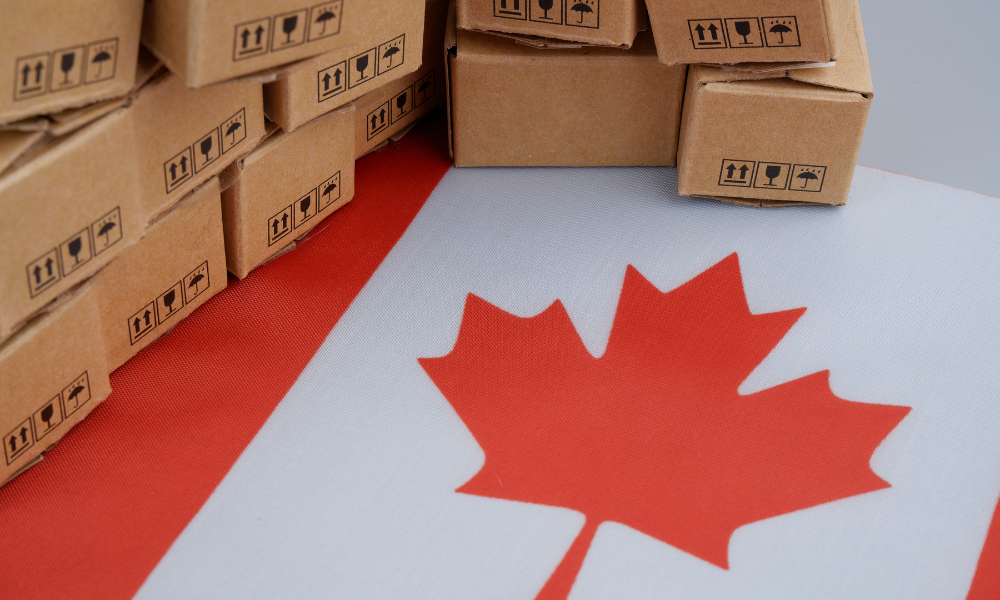Canada’s exports to the United States fall to 68.3% share while gold exports hit record $5.9 billion

A record surge in gold exports helped lift Canada’s trade numbers in May, but the country’s export share to the United States fell to one of its lowest levels on record—just 68.3 percent—according to Statistics Canada.
The agency reported that total exports rose 1.1 percent in May following an 11 percent drop in April, marking the first increase in four months.
But this improvement was largely driven by a 30.1 percent increase in exports of unwrought gold, silver and platinum group metals, which reached a record $5.9bn, as per Statistics Canada.
Most of this growth came from higher physical shipments of gold to the United Kingdom.
At the same time, exports to the US declined 0.9 percent in May—falling for a fourth consecutive month—as ongoing tariffs continued to reshape trade flows.
According to BNN Bloomberg, the average share of Canadian exports to the US dropped from 75.9 percent in 2024 to 68.3 percent in May.
As trade with the US weakened, exports to non-US countries climbed 5.7 percent to a new record high, Statistics Canada stated.
Key contributors included shipments of crude oil to Singapore and pharmaceuticals and unwrought aluminum to Italy.
Despite a drop in canola and crude oil exports to China, total trade (exports plus imports) with countries other than the US rose to $47.6bn in May, the third consecutive monthly record.
Canada’s merchandise trade deficit narrowed to $5.9bn in May from a record $7.6bn in April, according to the same release. Imports declined 1.6 percent, while exports rose modestly.
The decline in imports was largely attributed to a 16.8 percent drop in metal and non-metallic mineral products, especially unwrought gold and other precious metals, which fell 43.2 percent after a record spike in April.
Imports of passenger vehicles and parts also dropped 5.3 percent in May, following a 13.3 percent fall in April.
According to Reuters, this brought imports of passenger cars and light trucks to their lowest level in more than two years.
These declines coincided with reciprocal tariffs imposed by Canada in response to US trade actions, including a 25 percent tariff on Canada-made automobiles and 50 percent on steel and aluminum.
Meanwhile, Canada’s merchandise trade surplus with the US inched up slightly, from $3.1bn in April to $3.2bn in May, despite the broader downward trend in bilateral trade.
Imports from the US fell 1.2 percent, continuing a three-month decline, as reported by Statistics Canada.
Dan Kelly, president of the Canadian Federation of Independent Business, told CTV News that the uncertainty of ongoing trade negotiations is “what’s killing businesses,” leaving them unsure whether to expand, scale back, or delay projects.
He said businesses are “in suspended animation right now.”
Talks between Prime Minister Mark Carney and US President Donald Trump resumed after an earlier pause over Canada’s digital services tax.
According to BNN Bloomberg, both leaders committed to finalising a new trade deal by July 21.
Shelly Kaushik, senior economist at BMO, noted to CBC News that while May’s numbers show a slight improvement, “trade is going to weigh heavily on economic growth for Q2.”
She also cautioned against drawing conclusions from one month of data, especially given the concentration of growth in specific sectors such as gold.
In real (volume) terms, total exports were up 0.7 percent and imports fell 0.6 percent, Statistics Canada reported. Excluding metal and non-metallic mineral products, exports were down 1.2 percent.
Some sectors saw smaller rebounds.
Consumer goods exports rose 2.6 percent, driven by a 13.1 percent increase in meat products, especially pork to Japan, and a 52.9 percent rise in prepared and packaged seafood. However, these exports remained 18.5 percent lower than January’s peak.
On the import side, consumer goods rose 4.3 percent. Imports of miscellaneous goods and supplies, including video game consoles, increased 7.7 percent, and pharmaceutical imports rose 5.7 percent, primarily from Ireland and the US.
Service trade showed mixed results. Service exports edged down 0.2 percent to $17.9bn, while service imports rose 1.8 percent to $18.6bn.
When combined, total exports of goods and services reached $78.7bn in May and imports stood at $85.3bn, narrowing Canada’s overall trade deficit to $6.6bn from $8.0bn in April.
According to Andrew DiCapua, principal economist at the Canadian Chamber of Commerce, some exporters have begun forming new international relationships to replace US orders.
DiCapua added that although not all firms can shift markets easily, “if things improve in terms of Canada–US trade policy… we could see a positive rebound.”



